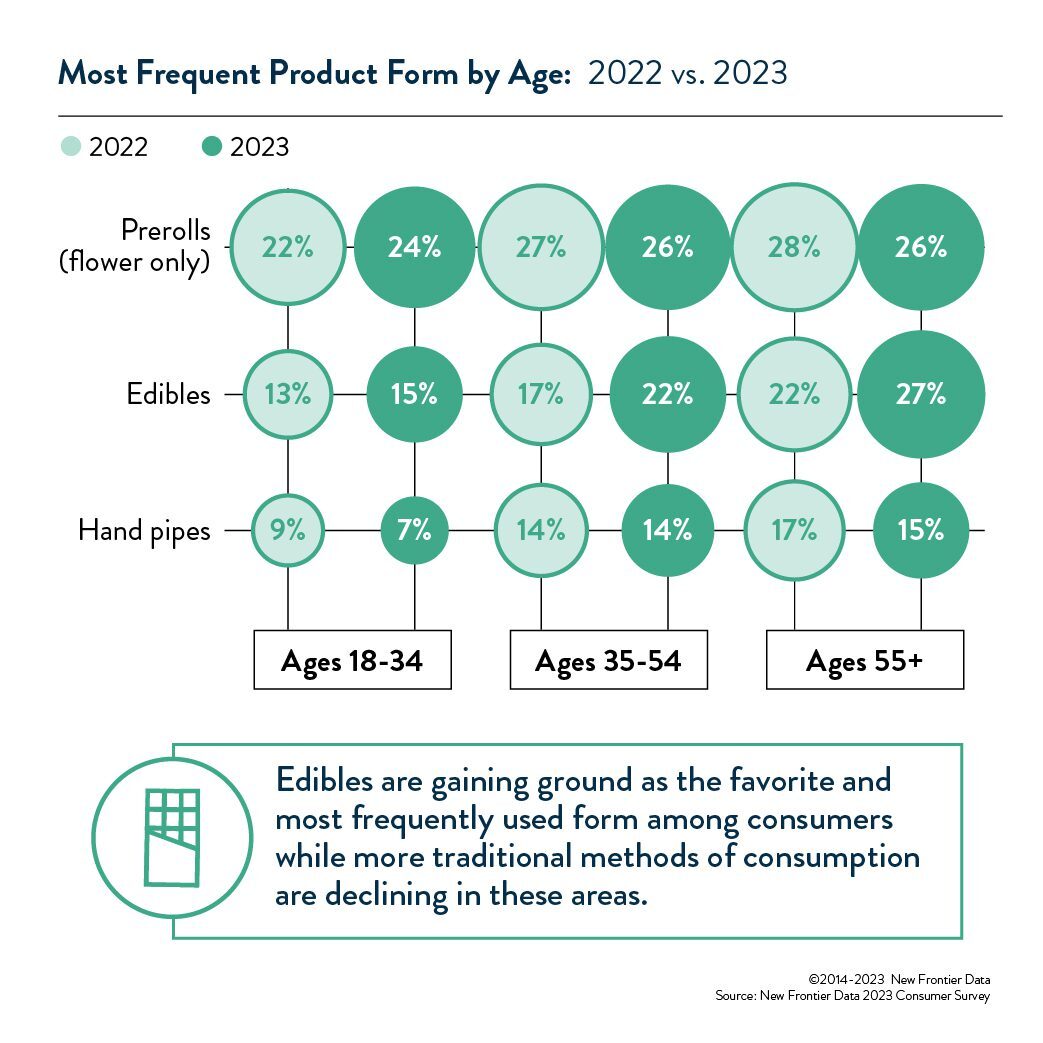Edibles are Gaining Ground as Consumers Look for Standardized Dosing and Ease of Use

New Frontier Data and Hearst Partnership Delivers All-in-One Mainstream Marketing and Customer Acquisition for the Cannabis Industry
June 1, 2023
New Frontier Data and Treez Unite Cannabis Dispensary Point of Sale and Local and State Market Data to Create a New Revenue-Generating Engine for Treez Dispensary Clients
June 15, 2023By Dr. Amanda Reiman (Ph.D., MSW), Chief Knowledge Officer, New Frontier Data
Before legalization, buying edibles could be a risky game. Whether it was unregulated products dressed up to look like legal ones, or bake sale-style brownies simply wrapped in cellophane, the difference between 5mg and 50mg was sometimes indistinguishable and dosing advice included things like “don’t eat more than a fingernail size piece”. Anyone who has taken more THC than intended can tell you that 10x the expected dose is not what you want to experience while at a festival or even relaxing outside on the weekend. During prohibition, flower was the most common product type bought and sold on the market. After all, cannabis consumers felt that they could evaluate flower based on look and smell, and even potent cultivars could be managed through the titration of dosing via smoking. However, as cannabis continues to be normalized through policy change and public acceptance, the emergence of standardized and properly labeled edibles has made this a fast-growing product category.
In 2022, 17% of consumers said that edibles were their most frequently used form of cannabis and 22% said it was their favorite form. In 2023, that rose to 21% and 25% respectively, while the use of flower in a hand pipe or one-hitter or as a joint (staples of pre-legalization consumption) fell in both categories.
There are a couple of reasons for this trend. First, as previously mentioned, testing and labeling of regulated products gives consumers assurance that the edible they are consuming is the dose advertised. This reduces the chance of overdose, and as more casual consumers enter the market, low-dose options are popular, which are harder to find in a flower market still largely centered on high THC. Secondly, one of the biggest barriers to the adoption of edibles was the time of onset. Traditional edibles took anywhere from 1-2 hours for the full effect, and this was inconvenient for consumers as well as also increasing the likelihood of overdose from taking more while waiting for the effect to kick in. The advent of fast-acting edibles with a promised onset of 10-15 minutes has disrupted the previous issue of dosing. This is especially helpful for those looking to use cannabis as a substitute for alcohol or prescription drugs. Those using cannabis as a substitute for alcohol don’t want to wait an hour for the effect while those around them are drinking and feeling the effects right away. And when using cannabis instead of a prescription drug like a pain reliever, the relief can’t come fast enough. Finally, as cannabis use in social situations becomes more acceptable, and more people wish to use cannabis outside of the home, products that don’t smell and don’t produce smoke are preferable. It is much easier to pop a gummy during your kid’s softball game than light up a joint.
With cannabis-friendly hotels, consumption lounges, and other opportunities for social consumption emerging, it will be interesting to see if they make accommodations for smoking, or if edible use will be bolstered by the rules around consumption in public places. Many states already have strict laws against smoking in public, which might make edibles even more attractive as the desire and comfort with use in public increases. For more information on this and other 2023 cannabis trends, download our latest report!




